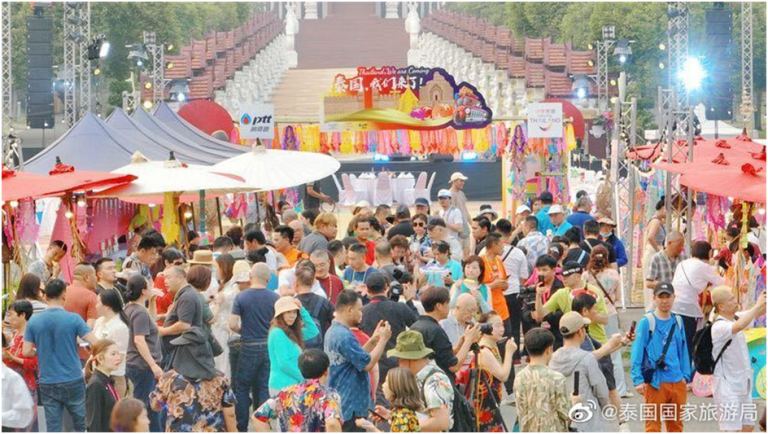
By Zhao Shan
The restart of outbound tourism just ignited the passion of Chinese tourists. Nowadays, Chinese travelers are seen in almost every popular tourist destination across the world. Among them, young people make up the majority. What are their features? What are the most popular attractions with them and what do they usually do during their outbound trips?
According to a report recently issued by online tourism platform Mafengwo, people born in 1990s accounted for 57 percent of the first batch of outbound tourists from China after the country optimized COVID-19 response measures.
Backpackers who used to travel alone now favor traveling in groups, and 77.7 percent of outbound tourists prefer trips with families, friends and partners, the report said.
About 57.4 percent of Chinese young outbound tourists stayed over a week at their destinations, and 24.6 percent extended the period to 15 days or above. Nearly half of this group’s per capita consumption exceeded 10,000 yuan ($1,444), who were potential consumers of higher-quality tourism products and experiences.
Countries in Southeast Asia remained the first stop of most young outbound travelers from China, with Thailand being one of the hottest destinations.
The operation of the China-Laos Railway further enriched the choices of young travelers in terms of transport. The hashtag “a railway trip to Laos” became a hot topic on Mafengwo, which made Laos’ Luang Prabang, a station along the China-Laos Railway, one of the overseas destinations that saw the highest growth in search volume.
Young Chinese are crazy about seaside destinations, and islands no doubt became top destinations for many young travelers from China. Phuket, Pattaya, Singapore, Maldives and other destinations were extremely popular among them.

Li Mengran, media public relation manager of travel agency company UTour, told People’s Daily that young tourists today prefer joining tour groups after arriving at their destinations. They usually make travel plans in advance and then purchase tour services at destinations, Li said.
According to online travel platform Fliggy, self-guided trips were chosen by over half of Chinese outbound tourists. The number of orders for one-day tour packages, which are more flexible, surged 15-fold year on year. One-day trips to Phuket and Similan Islands of Thailand as well as Malaysia’s Kota Kinabalu and Kapalai were hot among Chinese tourists.
An executive from Tuniu, a Chinese online travel agency, told People’s Daily that the agency has launched glacier hike, helicopter tour, and stargazing activities in the Mount Cook National Park of New Zealand, to cater to young tourists who love thrilling experiences.
According to the executive, hotels of these tour packages are mostly located in the national park so that young tourists would get better experiences.
The agency also launched novel tour services for young tourists going to the United Arab Emirates, such as desert offroad adventures, visits to the Museum of the Future in Dubai and the Ferrari World Abu Dhabi.
Quality, experience and entertainment have become the major factors that affect young tourists’ choices, and this is also true when it comes to outbound tourism. A long-term stay in Thailand’s Chiang Mai, motorboat rides around Phuket Island or the Camino de Santiago in Europe, the outbound trips of Chinese young tourists are becoming more and more interest-driven.

Apart from exit & entry policies, visa policies, transport and hotel information, emerging entertainment programs and internet-famous attractions are also receiving high attention from young outbound tourists from China.
An employee with Mafengwo told People’s Daily that timely, precise and complete information is just the basics of a good travel plan for many young people, what really attracts them is fresh, niche and individualized experience.
“There are many travelers sharing their new discoveries in our outbound tourism online community,” the employee said.










